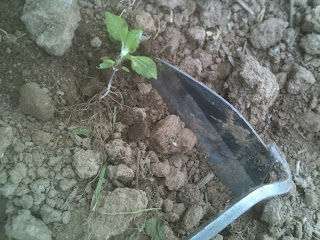Localvore’s Dilemma
I read an article a few years ago titled “The Localvore’s
Dilemma.” I can’t seem to locate
it anymore but I felt like the author hit the nail right on the head.
Yes, we want to support local agriculture for all the right
reasons: flavor, nutrition, and preservation of the land, the environment and
the local economy.
But let’s face it what do you do when your CSA box shows up
filled with turnips. You don’t
particularly like turnips and don’t have the time to handle 5 pounds of them.
I began eating locally 10 years ago (except when I eat out).
It was more of an economic decision for me. I was already farming and surrounded by wonderful produce I
was growing. And being a farmer
there are few monetary resources.
So when those piles of extra vegetables would come in I became extremely
creative. I always loved the idea
of canning so I would can tomatoes, jams, tons of pickles, relishes and
salsa. I would freeze all the
leftover greens from the CSA such as spinach, chard, and kale. I have researched tons of recipes to keep the dinners
creative. I have made lettuce
soup, baby pac choi dipped in chocolate and swiss chard baked into a sweet
pie.
This is creativity out of necessity but it has been so
awesome. I have really learned to
eat outside the box and find it super exciting to think of sorbets made of
beets or tomatoes. But, how do I
translate this to my customers.
How do I show them that to be a good localvore you need to do quite a
bit of research and be willing to try almost anything? We live in a world where we
demand tomatoes and strawberries in January (even though they have no flavor or
nutrition). We live on fruits that
are harvested before ripening and so offer discounted nutrition. And to think we are willing to pay
premium prices for these things.
We live in a super busy world. I of all people know that. How do you convince CSA members that the real value in being
a member is to store produce and eat outside of the box (or out of their CSA
box)? I can tell you that I no
longer can in the summer. I simply
freeze everything and make jams and salsa in the winter. Yes, freezing lessens the nutrition of
the produce but at the same time the produce was actually allowed to ripen to
fruition so in the end it is better than Chilean produce anyway. And a whole lot cheaper.
After 10 years of being a localvore I am no longer willing
to eat tomatoes and cucumbers in the wintertime. Why bother eating tasteless
fiber produce when I can enjoy the carrots, beets, radishes and cabbage I have
stored in my refrigerator for the winter.
I will wait to eat my strawberries when they are fresh and the
tastiest. I will hold out and make
it a special occasion. I see my
produce as gifts not to be squandered.
And I won’t settle for cheap mass-produced fiber just because I need to
have those tomatoes for my salad in December.
Roasted
Garlic Scapes
1 bunch of garlic scapes
1 tablespoon olive oil
salt and pepper to taste
Place whole garlic scapes on a cookie sheet on the top
shelf.
Drizzle with olive oil, salt and pepper.
Bake at 400 degrees till crispy, about 20 minutes.
You can also grill them whole drizzled with olive
oil.
These are great on meats, salads, tofu and fish. Use them whole or chop them up.






.jpg)
.jpg)








